
A great blue heron just misses a fish at Huntley Meadows Park.
By Blogger Wade Monroe
Photos by Wade Monroe
Hello all! My name is Wade Monroe, and I will be your guide through the Virginia Bird and Wildlife Trail (VBWT) this year. I am a photojournalist focusing primarily on wildlife and conservation, and I am originally from Oklahoma. I am eager to explore and learn more about the abundant nature and wildlife opportunities the VBWT has to offer! I will be working alongside fellow blogger and photographer Meg Raynes; if you have not already, please check out her January blog.
I am thrilled to share the Mason Neck loop with you all this month as it has been a constant source of joy for me since moving to Virginia and houses some of the best wildlife opportunities in the Northern Virginia area. Comprised of eight sites on the loop and located in the Piedmont Region of the VBWT, the Mason Neck loop is truly a perfect example of how successful conservation of wild spaces can be when so near an urban setting. In fact, most of the loop is within 30 to 40 minutes of the District of Columbia and Arlington, Virginia.
While some of the trails are smaller and perfect for an evening trip, the larger sites are worthy of and demand a full day’s attention if you can manage it. For concision, I will focus primarily on the largest, and “hottest” sites on the loop for nature and wildlife, though certainly make sure to check out the others.
Our first stop on the loop is Huntley Meadows Park. Located in Alexandria, Huntley Meadows covers more than 1,500 acres of wetland and forest. In my opinion, it is arguably the biggest “hidden gem” in the loop despite its recent boost in popularity due to a roseate spoonbill that found its way to the park this past summer. You truly never know what you might see here!
The park hosts two trails, but the main entrance trail system offers the best encounters. It cuts through old growth forest and eventually makes its way to a boardwalk that crosses the wetlands itself. The forested areas of the park are home to several barred owls, which are active during the day. Make sure to listen for their distinct “who-cooks-for-you” hooting pattern. Deer, raccoons, red fox, an occasional Eastern coyote, and several species of woodpecker make the forest their home as well. Pileated woodpeckers, North America’s largest woodpecker, are common to the park and are quite vocal. The sound of one drilling into a tree can be so loud it is often likened to distant bursts of firecrackers or gunfire.
While the forest is beautiful and full of life, the wetlands boardwalk is certainly my favorite part of the park. In winter, it hosts several species of waterfowl and shore birds—pintail, mallard, hooded merganser, ruddy duck, northern shoveler, American woodcock, and sora just to name a few! Additionally, many birds of prey, including red-shouldered hawks, nest and raise their young along the borders of the wetlands. If you arrive just at dawn on the right day you may even catch a glimpse of one of the Chesapeake Bay Watershed’s most elusive mammals, the river otter.
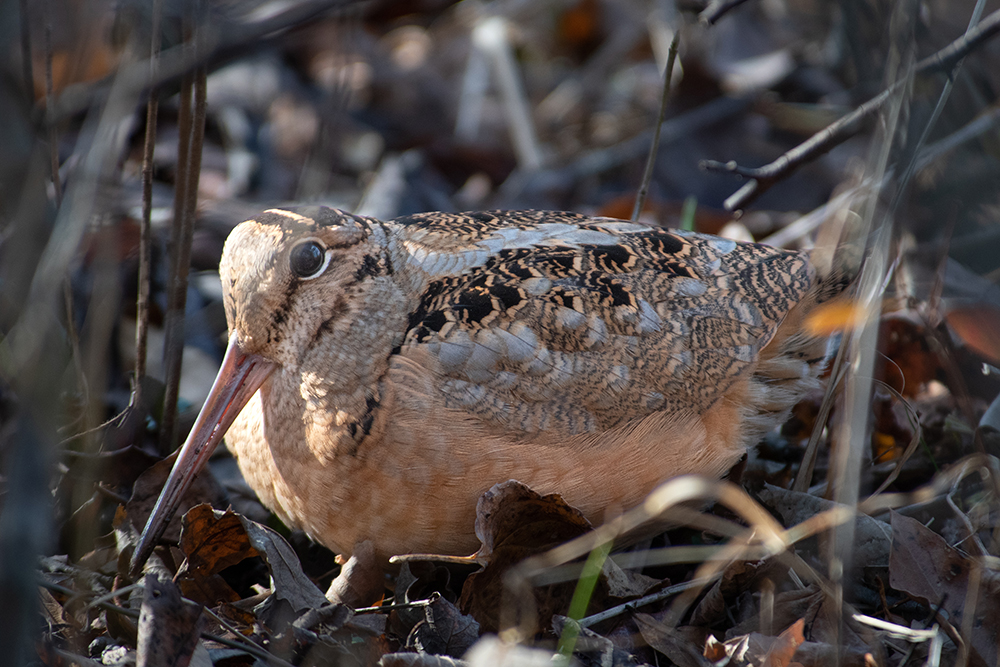
An American woodcock sits camouflaged in the leaves at Huntley Meadows Park.
In the spring or summer, scores of wading birds make their way to the wetlands to feast. Great blue herons, great egrets, little blue herons, and green herons are all plentiful. If you are lucky, you may even see a tricolored heron or one of many species of ibis! Last summer, there were even roseate spoonbills that made the park their home for a brief stint—a rarity for Virginia! Regardless, you are sure to see the species present catch many fish, tadpoles, frogs, and even mice. Last but certainly not least, you would be hard-pressed to overlook the evidence of the many beavers that call the park home. While they are primarily nocturnal during winter, be certain to visit at dusk during the late summer and fall, and you will likely see them grazing on the bountiful plant life.
Our next site on the loop, Dyke Marsh Wildlife Preserve, is just to the east of Huntley Meadows and features great views of the Potomac River. Due to the proximity to Huntley Meadows, they share many of the same ecological features. Wetlands make up a vast majority of the park and make the site a perfect location to kayak! Many of the reeds dry in the winter and become food for several species of woodpeckers. The forested portion holds many of the same species as Huntley Meadows and is currently home to a family of barred owls that return each year to nest in the park. They are very adept hunters and are awfully entertaining to watch as they feed their young. While the walking trail of Dyke Marsh is smaller, it is certainly easily accessible and a hotspot for bird watching year-round.
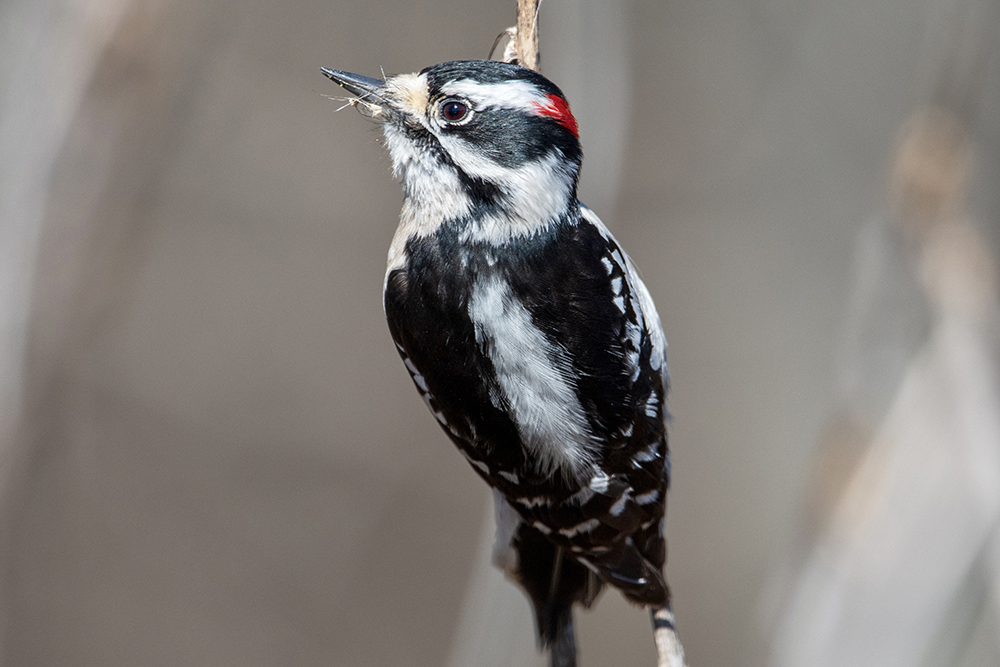
A downy woodpecker feeding on the dried reeds at Dyke Marsh Wildlife Preserve.
The final stop on our trip around the Mason Neck loop is the site that gives it the name itself: Mason Neck. This site is two in one—Mason Neck National Wildlife Refuge and Mason Neck State Park. They are directly adjacent to one another and make up the entirety of the Mason Neck peninsula. In other words, they are very big. Although the thrill of the unknown at Huntley Meadows will always appeal to me, the Mason Neck sites are by far nearest to my heart. Perhaps they remind me of the vast wildernesses I once frequented in Oklahoma, or maybe it is the pure silence that can be found there. Either way, it has become one of my favorite places to commune with Mother Nature.
Mason Neck State Park holds many miles of trails and covers a variety of habitat. The Bay View trail is a staple of mine when visiting the park. The trail will bring you to observation blinds that overlook the marshlands, over a short boardwalk across the marsh, and to the Occoquan Bay shoreline. Great horned and barred owls, as well as foxes, are very common, and you may find evidence of their passing if you look closely; the forest floor is often littered with fox tracks and owl pellets. Keep an eye out for large well-established trees, particularly if they are covered in large vines. Owls love them! Winter is a fantastic time to try and catch a glimpse of these rarely seen animals, and snowfall especially can make them easier to spot. Much like Dyke Marsh the park is a favorite of many local kayakers for the beauty and diversity it holds.
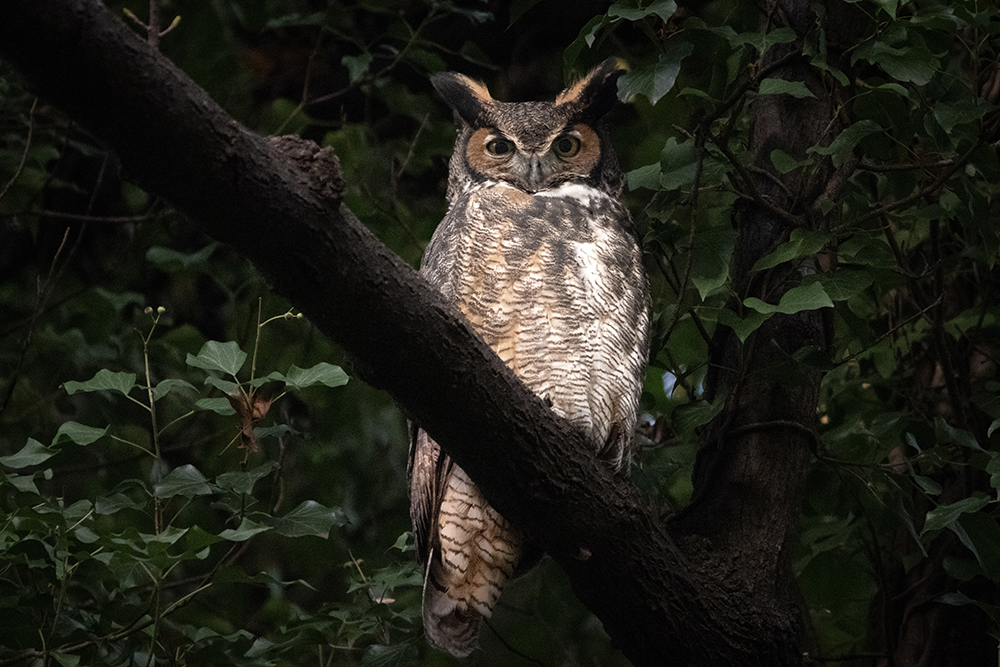
A great horned owl perched among vines at Mason Neck National Wildlife Refuge.
Just adjacent to the State Park is Mason Neck National Wildlife Refuge. This refuge, formed in 1969, was the first in the nation created to protect critical habitat for the then-endangered bald eagle, and it has certainly paid off. During one of my most recent visits to the adjacent state park I spotted no less than 40 eagles!
The refuge houses two trails. First, the Great Marsh trail, which is paved and only .7 miles long with several benches along the way and ends at an observation tower that overlooks the Great Marsh, a tidal freshwater marsh that covers 207 acres. Currently, the marsh is the home of hundreds of tundra swans visiting from the north and is one of the largest rookeries for great blue herons in the state.
Nevertheless, the Woodmarsh trail is my favorite. At just over 3 miles long it winds through a huge forest that is brimming with life. Just this month I have seen multiple foxes, owls, deer, smaller birds of every type, as well as a family of beaver while hiking these trails.
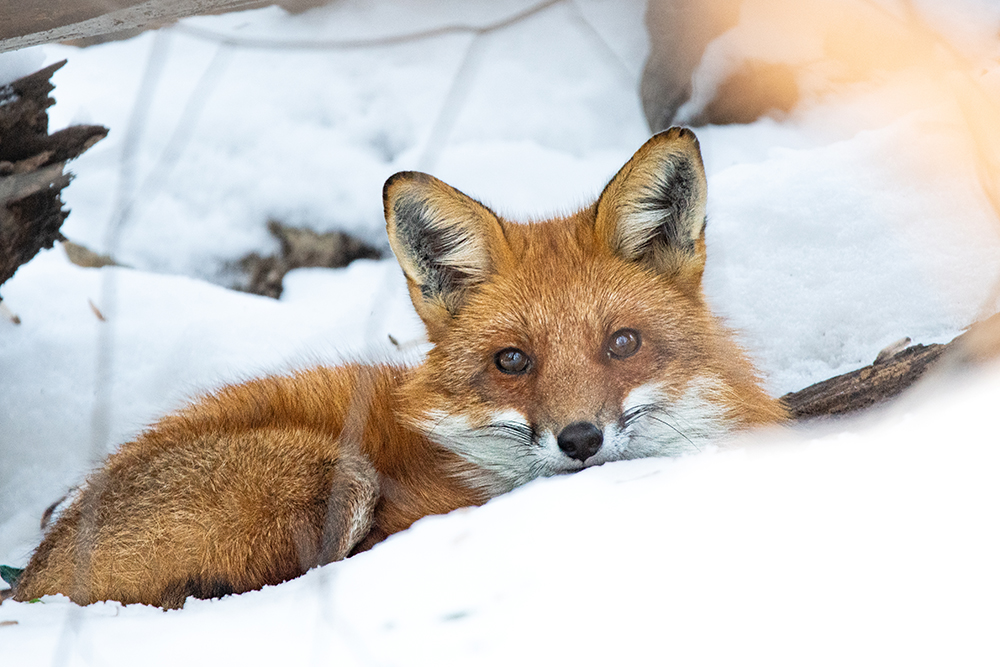
A red fox takes a midday nap in Mason Neck National State Park.
These urban refuges for wildlife are among my favorite in Virginia and I am lucky to live so close to such natural beauty. Quality time spent in nature is fundamental to who I am, and I am thankful to share my knowledge with others, especially now as so many of us are seeking more time outside. You do not have to be a professional photographer or expert in biology to enjoy all the benefits nature can offer. The outdoors are for everyone, and the outdoors are better together!
Explore the Wild with Wade Monroe
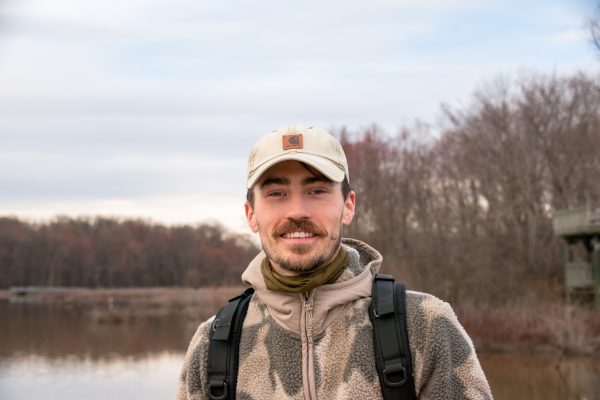
Wade Monroe is a wildlife photojournalist with a focus on wildlife conservation.
If you would like to follow along as he explores the Virginia Bird and Wildlife Trail, then make sure to subscribe to DWR’s Notes From the Field newsletter.
Follow Wade on Instagram @wademonroephoto to see all of his amazing photography.


